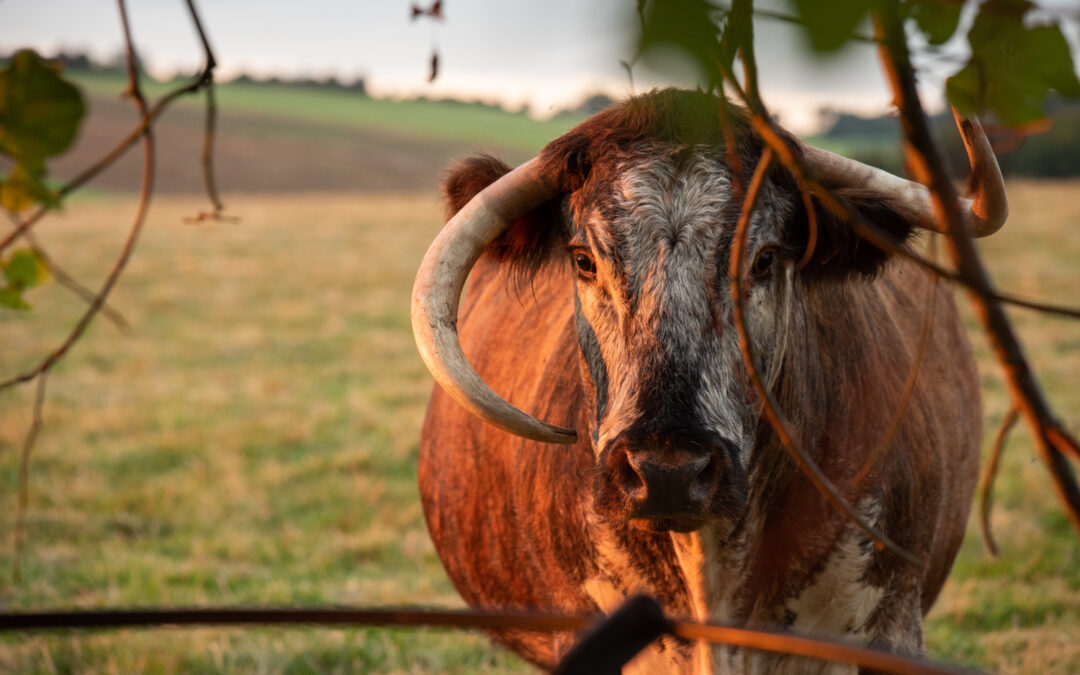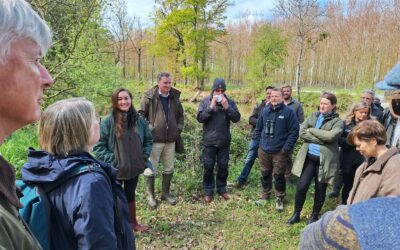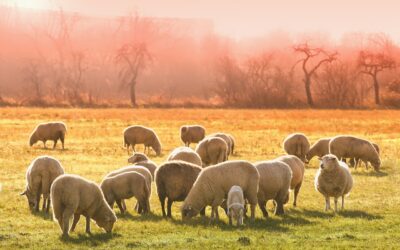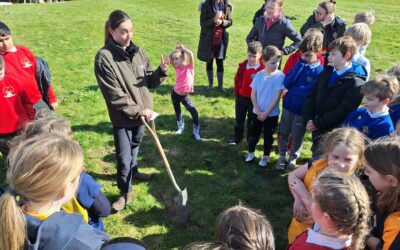Earlier this month we invited our local community – neighbours, villagers and landowners – to hear about the biodiversity project here at Ewhurst.
There were presentations and discussions and – excitingly – I was able to share that this winter we are reintroducing beavers to Hampshire for the first time in 400 years (more on this below).
We gathered in the new Ramsdell Village Hall, and we had presentations from Natural England, the Hampshire and Isle of Wight Wildlife Trust, the NWDAONB (North Wessex Downs Area of Outstanding Natural Beauty), renowned nature conservationist and author Derek Gow, and Wild Ken Hill.
It was an emotional experience for me – a chance to share my vision for the land regeneration project here at Ewhurst Park.
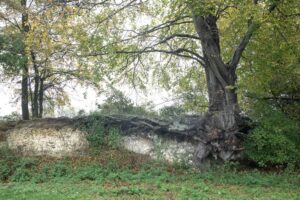
It’s now seven years since I settled in the UK and two years since I arrived at Ewhurst. We hosted our first community gathering in September 2021, and since then I have been getting to know my neighbours – I’m learning from them and the gathering this month was another chance to compare notes.
In some ways, I feel like I’m returning to my roots. I grew up in rural Malaysia. My family and neighbours grew fruit and veg and kept chickens – we shared our produce, sold what we had grown at market, and looked out for each other.
My career then took me around the world – I lived out of a suitcase but was always yearning for a sense of community. So I valued meeting people – whoever they were, wherever they were from – if for only short periods of time; I called these people my ‘little communities’. Now I’m settled at Ewhurst Park, I feel like I am returning to the land and a more settled sense of community.
As we work with the land at Ewhurst, I’m aware I’m on a learning journey. To give an example, as a child in Malaysia I was surrounded by tropical rainforest – it seemed as though everything was out to kill me! In those rainforests there were all manner of insects and, though rarely seen, snakes, sunbears and leopards. So, when I came to the UK, perhaps it was no surprise that when I saw a slug for the first time, I thought it was a leech out to get me – then someone kindly pointed out what it was and that I was overreacting!
I am learning from books, attending conferences and speaking to my neighbours. But I’m also learning through experience. My first summer at Ewhurst, the land was bare and a little lifeless, so we decided not to cut the grass until as late as possible. A new grassy landscape emerged, together with an explosion of flowers, butterflies, insects and birds. Right in front of me, the land came alive! A neighbour noticed and said she was amazed by the work we had done – but I had to admit, we hadn’t done anything. It was not doing something – not cutting the grass – that had made the difference.

Later this month, our biodiversity project continues with the release of a mating pair of beavers onto the land. We are running a competition in local schools to name them – the children’s suggestions will be judged by a prestigious panel: Rosemary Mayfield, whose family owned Ewhurst Park for nearly 60 years and who is kindly helping me to understand Ewhurst’s past; Debbie Tann, CEO of Hampshire & Isle of Wight Wildlife Trust; Rob West, the Farming in Protected Landscapes Officer at NWDAONB, and Dr Roisin Campbell-Palmer, Head of Restoration at the Beaver Trust.
Historically, we know there were beavers at Ewhurst until 400 years ago when they were hunted to extinction in the UK.
Beavers are a ‘keystone species’ – an animal that can define a local eco-system. When beavers hear running water, they have a natural instinct to build a dam; the dams raise the water level, which means the beavers can dive in and escape predators (primarily foxes). The dams they build – and the little pools and canals alongside them – become natural habitats for a host of species: frogs, toads, voles, dragonflies and other insects, fish, bats and birds. We also see a profusion of plant life, which cleans the water. The new landscape slows down running water, reducing erosion, and this activity has been credited with preventing flooding 1.
This is why we can say that beavers are ‘landscape architects’ or ‘water gardeners’ – they are friendly to the land. And, to counter a common misconception, they don’t eat fish or other animals – they’re herbivores.
Excitingly, next year you will be able to see for yourself – watch this space for news of our livestream ‘beaver cam’.
And so, as we approach the end of the year, I want to thank everyone for your love and support. We wish you all a happy new year and invite you to join us on our biodiversity journey in 2023.
1 Why beavers could be the UK’s secret weapon against flooding: https://inews.co.uk/news/environment/uk-flooding-beavers-dams-flood-prevention-reintroduction-398579

